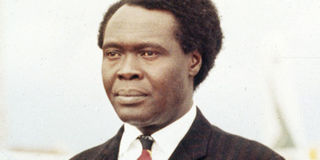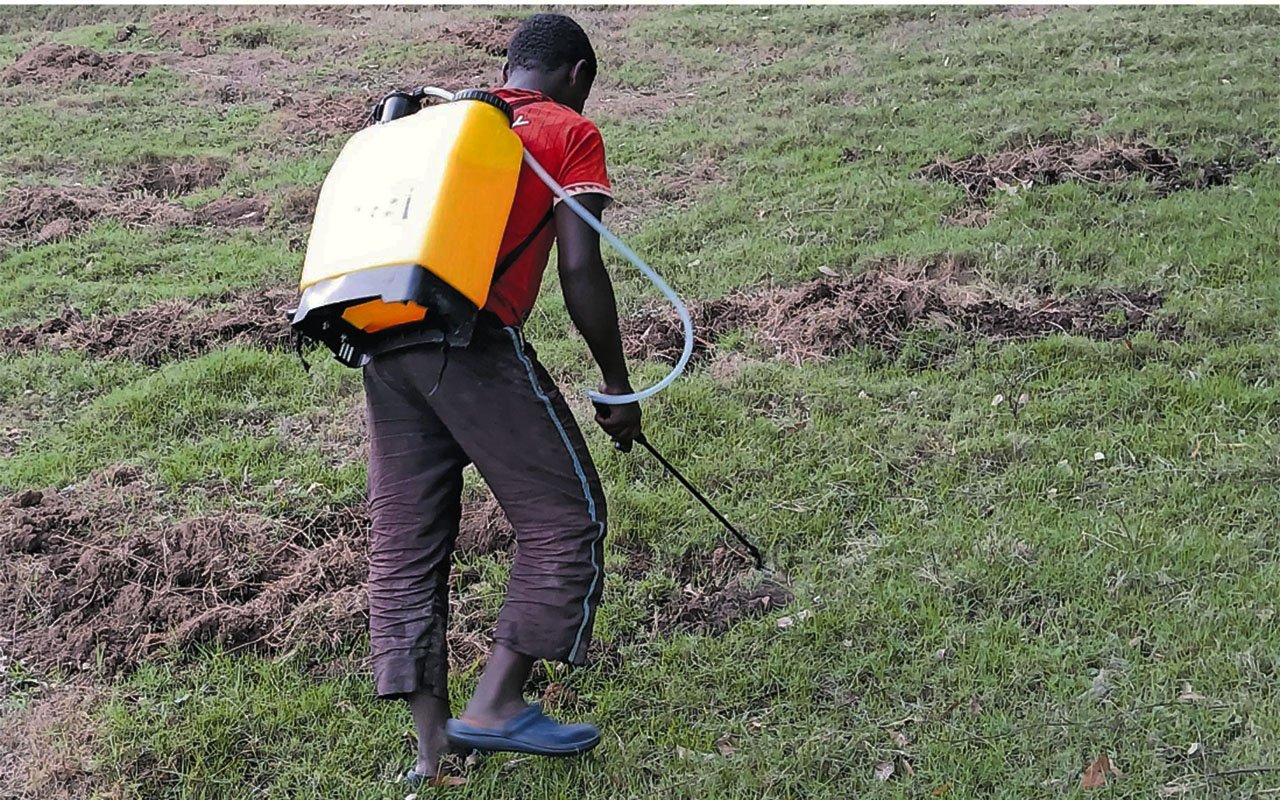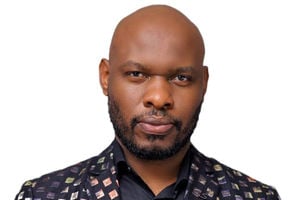Prime
Return Obote war sparks off decades of conflict

Dr Obote
When the January 25, 1971 coup occurred, Uganda’s president Milton Obote was in Singapore for the Commonwealth Heads of States and governments’ summit. After the coup, soldiers made the former army commander Major General Idi Amin, president of Uganda.
From Singapore, Obote was devastated. He could not comprehend how he was toppled. Still obsessed with power, he in fact insisted to be flown to Entebbe airport with his entourage by the East African Airways but after a long explanation, he understood that returning to Uganda meant death.
And after he had landed in Nairobi, consultations were made and it was agreed that he relocates to Tanzania. From Nairobi, a small plane was chartered to fly him to Dar es Salaam with some members of his entourage.
On arrival in Dar es Salaam, Obote held a press conference and said: “There is no question of any takeover. I can tell you, I am going back to Uganda after I have had my discussions here [with Tanzanian president, among others].
Nation [now The Daily Nation], a Kenyan newspaper of January 26, 1971 quoted Obote vowing to return to Uganda immediately. But after the dogma had slowly evaporated and reality prevailed, Obote accepted his fate and understood that he was now a political refugee in Tanzania, who would not return to Uganda as easily as he thought.
But immediately, Obote with colleagues and well-wishers, contacts were established and efforts made for Obote to return to Uganda as president. It was thus resolved that only by the gun, would Obote return to Uganda as president. And next, was the return Obote war plan.
Recruitment of fighters
Presidents Julius Nyerere of Tanzania, Jaafar Niemiery of Sudan and Kenneth Kaunda of Zambia, were the key strategists of the war to reinstate president Obote in Kampala.
Each of the three countries provided assistance according to their capacity. Tanzania hosted the nucleus of the rebels, funded them and also provided training groups just like Sudan. Zambia gave some finances and war logistics, morale as well as propelling propaganda against the Kampala regime.
Having secured funds, training camps and other crucial logistics, next was the recruitment of the fighters from inside Uganda.
Using the Tanzanian and Sudanese intelligence, Obote and his most trusted lieutenants started recruiting Ugandans who wanted to join the force to fight the Amin military regime and reinstate Obote as president.
Acholi, and Lango sub-regions in northern Uganda led in the clandestine recruitment drive for the Uganda People’s Liberation Force (UPLF), which had been named Obote forces by many authors due to lack of information of its true name – which Saturday Monitor, is the first media platform to publish since the group was first heard of in 1971.
Nonetheless, other sub-regions such as Kigezi in south western Uganda and Bugisu in eastern Uganda, also provided rebel recruits.
Military training in Sudan
From intelligence gathered by the military regime in Kampala, it was discovered that Sudan and Tanzania had offered to train Obote’s rebels besides funding and providing other logistics needed.
In Sudan, rebels received military training at Owiny-Kibul while in Tanzania, they were hosted at Kigwa and Mukuyu.
It should be noted that president Niemiery of Sudan offered training grounds before President Julius Nyerere of Tanzania. Apparently, Obote had wanted to launch the war in August 1971 about six months after his overthrow, a plan president Nyerere thought was impossible at the time. Soon after President Niemiery offered Owiny-Kibul as the training ground, rebel recruitment started from inside Uganda and elsewhere.
Amin aware of Obote’s return war
Immediately Obote started rebel recruitment, Amin’s military government got intelligence. For instance, on April 15, 1971 at his office on the parliamentary building in Kampala, Amin was shown 80 rebel recruits who had been arrested at the Uganda-Kenya border.
The recruits revealed that they had been recruited by the Uganda Peoples Congress (UPC) stalwart Janet Akol from Lango in northern Uganda. Addressing the press, Amin indicated that Lt Col David Oyite Ojok who had fled to Tanzania, was in charge of rebel military training.
Also, two Tanzania spies, Gosbert Kattabaro and Sam Kabalagala, who had been arrested, were paraded to the press who also interviewed them. The two revealed all the intelligence information to Amin, including their contacts across Uganda.
And before the press, Amin vowed: “It should be well-understood that Obote will never come back as president of Uganda whether I am alive or dead,”.
The Uganda Argus of April 16, 1971, wrote about the press conference further quoting Amin: “Anyone who assists the guerrillas trying to reinstate Obote is digging his own grave”.
And speaking at the May 1, 1971 International Labour commemoration held in Kabale , he emphasised: “As some of you must have heard over Radio Uganda or read in the newspapers, Obote who has been rejected by all the people in Uganda is recruiting a few misguided youths, especially from Lango District.
Those youths, travel secretly to Tanzania and Sudan for military training to come and fight Uganda as guerrillas”.
He added: “Obote thinks he can use these youth to return to Uganda as president. He is completely mistaken. Obote will never come back as president. These guerrillas are digging their own graves.”
Nonetheless, a lot of emphasis was put on gathering intelligence on Obote’s activities in Tanzania and less was put on monitoring Sudan. As a result, little or none was known about the camp at Owiny-Kibul in South Sudan.
While Uganda had some intelligence information about rebel recruits going to Tanzania, they had no knowledge of the UPLF camps in Sudan until one rebel Antonio Odur deserted the rebel ranks hours to the attack on Uganda. On September 15, less than 48 hours to the attack on Uganda, Odur and a colleague deserted the UPLF, crossed into Uganda and surrendered to the Uganda police at Kyotera in Masaka District.
It was from Odur that the government got details about the UPLF activities.
Odur said he was born in 1949 at Palaro village in Patiko sub-county Aswa County in west Acholi in northern Uganda – and that he was married to Parisist Auma with two children and had only one brother called Justice Oloya. During the interrogation by the Public Safety Unit (PSU) at Naguru in Kampala, Odur narrated how he was recruited into the rebel ranks.
More revelations
Odur, a peasant, revealed that in early April 1971, he went to Palaro village market and found people recruiting Ugandans to go to Tanzania to form an army to fight for Obote to return to Uganda but he did not join.
The following night, a man called Olam met him at John Lami house and asked him to join a force to fight for the return of Obote to power. Odur said: “Olam told me how he had been to Tanzania.
He said he had travelled through Kenya and then to the Sudan from where he reentered Uganda trough Owiny-Kibul.
He said they were 10 of them and he had purposely come to recruit more people to be trained in Sudan to fight to restore Obote to his post”. He added: “Lami assured us that the governments of Tanzania and Sudan were prepared to fight for Obote”.
During interrogation, Odur also revealed that he and others had received a more than one-year military training in Sudan.
Odur also narrated that on April 14, 1971 about 50 people met at a place called Atali near river Aswa and started a two-day-walk to Owiny-Kibul inside Sudan. At Owiny-Kibul, they met other people from Uganda and were received by Francis Apira, a former deputy Chief of the General Service Unit (GSU), Uganda’s first secret service agency.
Other leaders present were Picho Ali, Paul Karim, Masete Peter Oala and Ocen, the former Commissioner of the Uganda prison service, while Lt Col David Oyite Ojok was the overall commander. After three days of resting, a force of about 900 men started military training which lasted one year and two months.
More information about rebel activities was got from the prisoners of war. And one of them was Kesi Oboh Odenge captured during the Mutukula battle and revealed his army number as UA 6427 of B Company and was formerly attached to Malire barracks in Kampala.
Odenge said he was recruited into the rebel ranks and went to Sudan for military training at Owiny-Kibul where they were trained by Sudanese soldiers who also gave them everything they needed. On June 27, 1972, they began the long sea journey from Port Sudan by ship to Tanzania. They reached Tanga on July 5, 1972 and after two weeks resting resumed training which lasted for two months.
Odenge further told the interrogators that they had been informed that the war was to be launched September 13 19762. The launch date was later changed to September 16.
Helper’s hands tied
While Odur and Odenge thought that they had left Owiny-Kibul after military training to attack Uganda from Tanzania, the truth of matter was that President Niemiery came under pressure for hosting the UPLF rebels, especially after the February 1972 peace accord between the Khartoum government and the Anyanaya Movement in south Sudan.
Since he could not host them anywhere in Sudan apart from the forests around Owiny-Kibul, that is why they were relocated to Tanzania which accepted to host them. Otherwise, the rebels were to stay at Owiny-Kibul until the war started.
Having finished military training, Odur said that on March 5, 1972, they embarked on the long journey to Tanzania. They were put on trucks and moved to the northern part of Sudan to a place called Kadoki near Port Sudan where they stayed for months.
While all the previous accounts of the September 17, 1971 attacks from Tanzania were recorded as surprise attacks, especially by president Museveni’s bookSowing the mustard seed, Odur’s confession to the intelligence indicate otherwise, especially after he surrendered.
Who was Jaafar Nimeiry, Obote's ally?
Gaafar al-Nimeiry was an army colonel who took over Sudan in a 1969 coup. By taking a constantly swerving political course, he held on to the presidency until a bloodless coup ousted him in 1985, died in Sudan on May 30. He was 79.
Although he was often seen as one of the more moderate Arab leaders, he was not averse to violent crackdowns and even mass executions of opponents. He survived four attempted coups in his first nine years in power.
Colonel Nimeiry led a small group, calling itself the Free Officers, that seized power on May 25, 1969.
Their cause, they said, was Arab nationalism and revolutionary socialism patterned after the ideology of President Gamal Abdel Nasser of Egypt.
At the time of the coup, the southern region of Sudan — home to black Christians and animists who felt oppressed by the Muslim-dominated government — had been plagued by rebellion for 14 years. Nimeiry’s official biography says he was rebellious even as a teenager: When Britain delayed granting Sudan self-determination, he led a strike that kept his secondary school closed for seven months.
Source: New York Times




